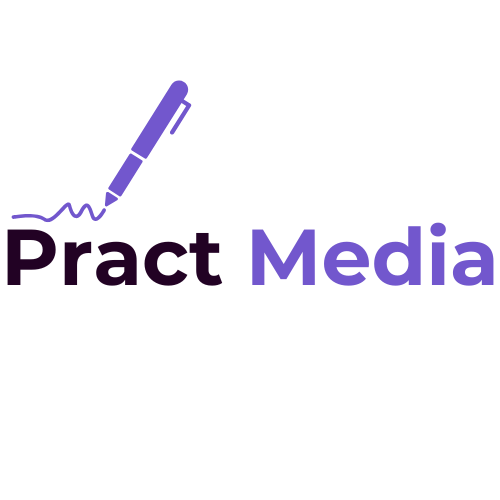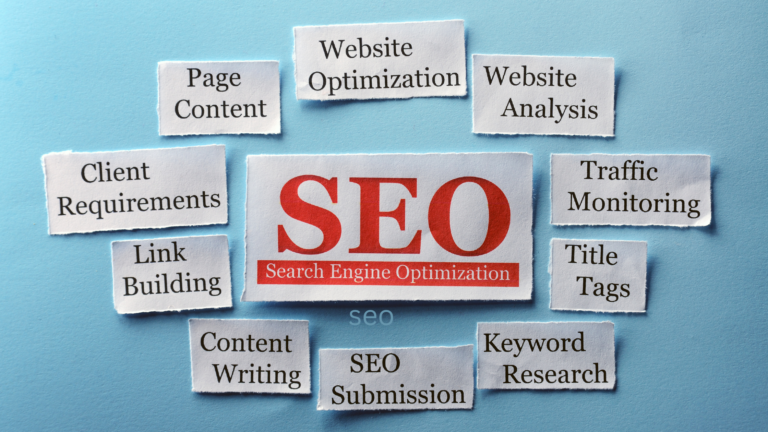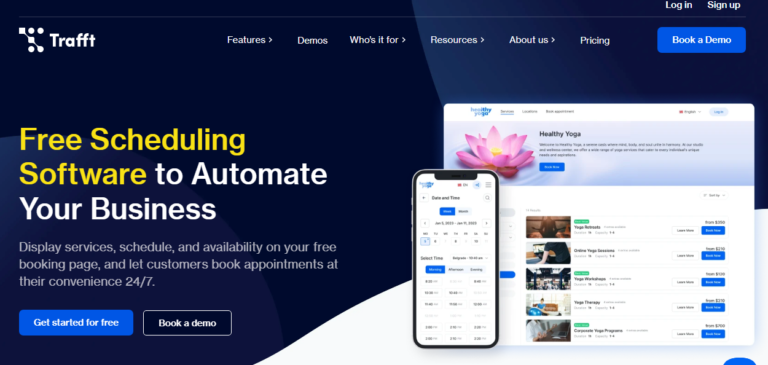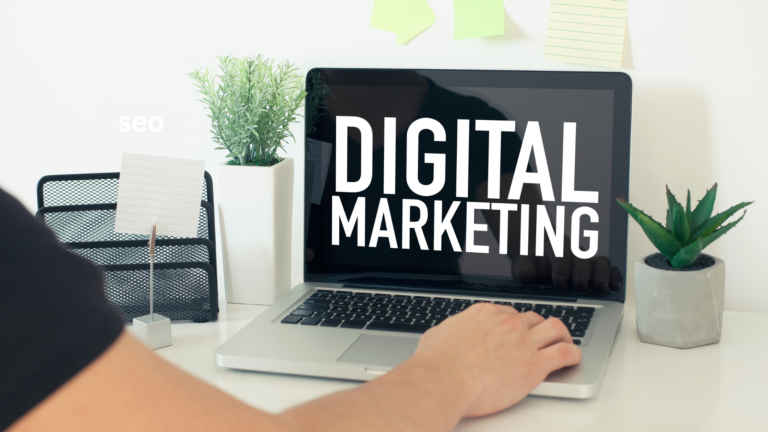The Ultimate Guide to Lead Generation: Strategies
Lead generation is the cornerstone of a successful marketing strategy,
especially in the digital field, where fierce competition and businesses are vying for attention.
To survive and thrive, mastering the art of lead generation is crucial.
This comprehensive guide will walk you through everything you need to know about lead generation,
from the basics to advanced strategies, emphasizing outranking your competitors.
Understanding Lead Generation strategies
What is Lead Generation?
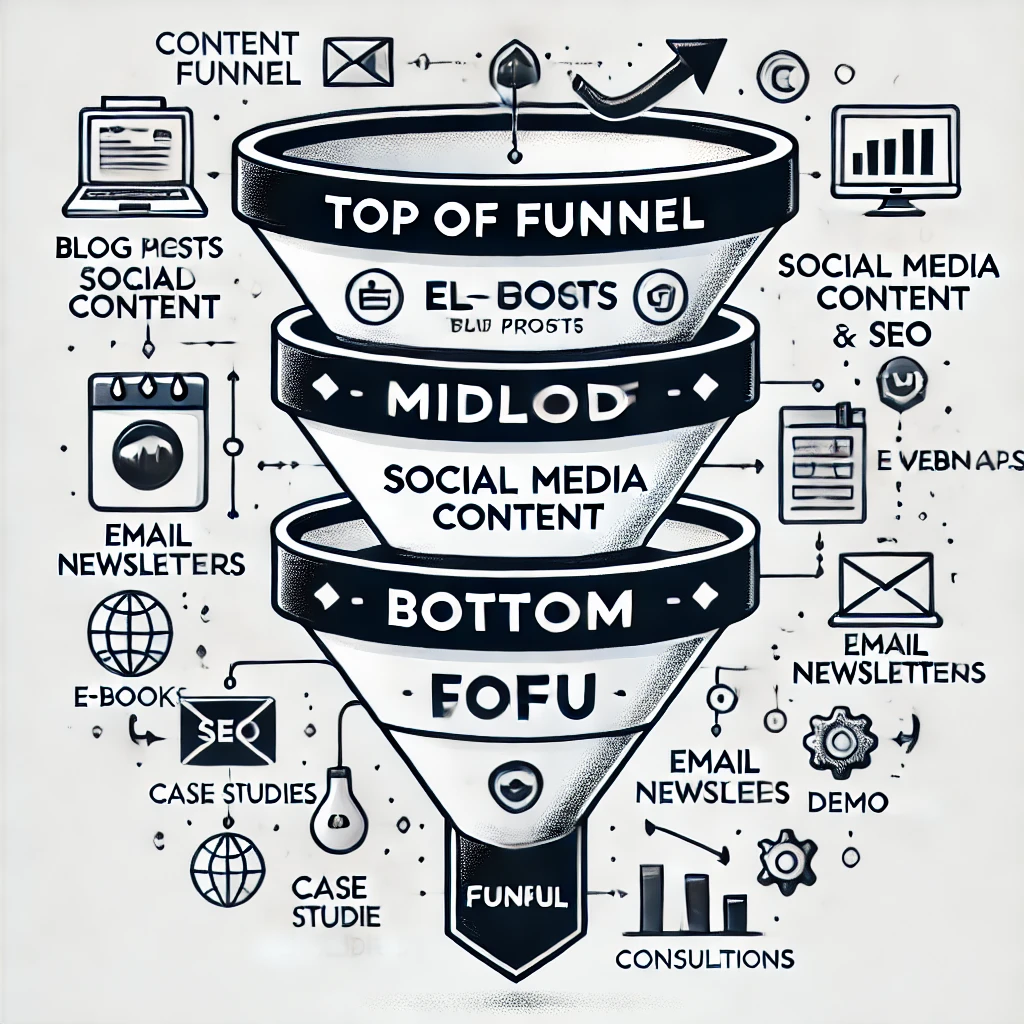
Lead generation attracts and converts strangers into prospects and, eventually,
pays customers. It involves capturing potential customers’ interest through various marketing tactics and nurturing them until they are ready to purchase.
The ultimate goal of lead generation is to create a sustainable pipeline of leads that consistently drives sales and business growth.
The Lead Generation Funnel
The lead generation process can be visualized as a funnel:
- Top of the Funnel (TOFU): This is where you attract visitors through content and marketing efforts. The focus is on drawing in a broad audience that fits your target customer profile.
- Middle of the Funnel (MOFU): Here, you nurture the leads you’ve captured, providing them with valuable information and moving them closer to making a decision.
- Bottom of the Funnel (BOFU): Leads are ready to convert at this stage. This is where you present your offer and encourage them to take action, whether making a purchase or signing up for a service.
Importance of Lead Generation for Business Growth
Lead generation is essential for sustaining and growing your business.
Without a steady stream of leads, your sales team will struggle to meet revenue goals, and your company may face stagnation.
Here’s why lead generation is critical:
- Revenue Growth: More leads translate into more conversion opportunities, directly impacting your revenue.
- Cost Efficiency: Effective lead generation strategies help you target the right audience, reducing the cost of customer acquisition.
- Market Expansion: Lead generation allows you to enter new markets by identifying potential customers in different regions or industries.
- Customer Insights: Analyzing your leads’ behavior and preferences can yield valuable insights for product development and marketing strategies.
Types of Lead Generation
Inbound Marketing
Inbound marketing is a lead generation strategy focused on attracting customers by creating valuable content and experiences tailored to them.
Unlike outbound marketing, where you reach out to potential customers,
inbound marketing draws customers to you. Key components include:
- Content Creation: Blogs, eBooks, infographics, and videos that provide value to your audience.
- SEO Optimization: Ensuring your content ranks well in search engines so it can be easily found by those searching for relevant information.
- Social Media Marketing involves engaging with your audience on social media platforms to build relationships and drive traffic to your content.
Outbound Marketing
Outbound marketing involves proactively reaching out to potential customers through direct marketing efforts such as:
- Cold Calling: Directly contacting potential leads via phone to introduce your product or service.
- Email Outreach: Sending targeted email campaigns to prospects to generate interest.
- Advertising: To reach a larger audience, use paid channels like Google Ads, social media ads, and display ads.
Content Marketing
Content marketing is a powerful tool in lead generation,
focusing on creating and distributing valuable,
relevant content to attract and engage a clearly defined audience.
Effective content marketing tactics include:
- Blogging: Writing informative and engaging blog posts that address your audience’s pain points.
- Video Content: Create videos that explain your products or services, share customer testimonials, or provide tutorials.
- Webinars: Hosting live sessions where you provide expert advice or insights on a particular topic.
Email Marketing
Email marketing remains one of the most effective lead-generation tactics.
It involves sending targeted emails to prospects and nurturing them through personalized content until they are ready to convert.
Key strategies include:
- I am building an Email List by collecting email addresses through lead magnets like eBooks, webinars, or special offers.
- Segmenting Your Audience: Dividing your email list into segments based on demographics, behavior, or interests to deliver more personalized content.
- Automated Email Campaigns: Setting up automated workflows that send emails based on triggers such as website visits, downloads, or cart abandonment.
How to Create a Lead Generation Strategy
Identifying Your Target Audience

The first step in creating a lead generation strategy is clearly defining your target audience.
Understanding who your ideal customers are will allow you to tailor your marketing efforts and increase the effectiveness of your lead-generation campaigns.
Steps to identify your target audience include:
- Market Research: To understand your potential customers’ demographics, needs, and preferences.
- Creating Buyer Personas: Develop detailed buyer personas representing your ideal customers, including their goals, challenges, and buying behaviors.
- Analyzing Competitors: Study your competitors to identify gaps in the market and potential opportunities for your business.
Crafting the Perfect Value Proposition
Your value proposition is your promise to your customers about the value
your product or service will deliver.
Crafting a clear and compelling value proposition that resonates with your target audience is crucial.
Key elements include:
- Clarity: Make sure your value proposition is easy to understand and communicates the unique benefits of your offering.
- Relevance: Ensure your value proposition addresses your audience’s needs and pain points.
- Differentiation: Highlight what sets your product or service apart from the competition.
Choosing the Right Channels
Choosing the proper lead generation channels is critical to effectively reaching your target audience.
Consider the following when selecting channels:
- Audience Location: Identify where your audience spends their time online, such as social media platforms, forums, or industry websites.
- Content Suitability: Choose channels that best suit the type of content you plan to create, whether it’s video, written content, or visual media.
- Budget: Evaluate the costs associated with each channel to ensure you can achieve a positive return on investment.
Optimizing Your Website for Lead Generation
Your website is a powerful tool for lead generation,
serving as the central hub where potential customers can learn more about your offerings and take action.
To maximize lead generation from your website,
follow these best practices:
SEO Best Practices
Search engine optimization (SEO) is critical for driving organic traffic to your website.
Focus on the following areas:
- Keyword Research: Identify the most relevant and long-tail keywords your target audience is searching for. Incorporate these keywords into your website content, meta descriptions, and alt tags.
- On-Page SEO: Optimize your website’s structure, including title tags, headers, and URLs, to ensure they are SEO-friendly.
- Content Quality: Create high-quality, informative content that addresses your audience’s needs. This will improve your ranking and increase the likelihood of conversions.
- Backlink Building: Establish authority by earning backlinks from reputable websites within your industry.
Landing Page Optimization
Landing pages are crucial for converting visitors into leads.
A well-optimized landing page should:
- Have a Clear Headline: The headline should immediately convey the value of your offer.
- Include a Strong Call to Action (CTA): The CTA should be clear, compelling, and prominently displayed. Use action-oriented language like “Download Now” or “Get Started Today.”
- Utilize Social Proof: Include testimonials, reviews, or case studies to build trust and credibility.
- Keep Forms Simple: Only ask for essential information to reduce friction and increase form completions.
Conversion Rate Optimization
Conversion rate optimization (CRO) involves making data-driven changes to your website to improve the percentage of visitors who become leads.
Techniques include:
- A/B Testing: Test different versions of your landing pages, headlines, CTAs, and forms to determine what resonates best with your audience.
- Heatmaps and Analytics: Use tools like heatmaps to see how visitors interact with your site and identify areas for improvement.
- Optimizing Load Time: A fast-loading website enhances user experience and reduces bounce rates, leading to higher conversions.
Leveraging Content Marketing for Lead Generation
Content marketing plays a significant role in attracting and nurturing leads.
You can establish authority, build trust,
and guide prospects through the buyer’s journey by providing valuable and relevant content.
Blogging

Blogging is one of the most effective content marketing strategies for lead generation.
A well-maintained blog can:
- Drive Traffic: Regularly updated blog content can help attract visitors through organic search, social media, and referrals.
- Establish Authority: Publishing insightful and informative articles positions your brand as a thought leader in your industry.
- Generate Leads: To capture leads, incorporate lead magnets like eBooks, checklists, or free trials into your blog posts.
Video Content
Video content is highly engaging and can effectively convey your message.
Consider the following types of video content:
- Product Demos: Showcase your product’s features and benefits in action.
- Customer Testimonials: Share success stories from satisfied customers to build trust.
- Educational Videos: Provide tutorials or explain complex topics in an easy-to-understand format.
Webinars and Podcasts
Webinars and podcasts offer real-time opportunities to engage with your audience, providing valuable insights and establishing a deeper connection.
Benefits include:
- Lead Capture: Require registration for webinars to collect contact information from attendees.
- Expert Positioning: Hosting a webinar or podcast on industry-relevant topics positions you as an expert and attracts high-quality leads.
- Repurposing Content: Webinar and podcast recordings can be repurposed as blog posts, videos, or downloadable resources.
The Role of Social Media in Lead Generation
Social media platforms are powerful tools for generating leads,
allowing you to connect with a broad audience and engage with potential customers.
To effectively use social media for lead generation:
Choosing the Right Platforms
Not all social media platforms are created equal. Select platforms based on:
- Audience Demographics: Determine where your target audience is most active. For example, LinkedIn is ideal for B2B lead generation, while Instagram may be better suited for B2C.
- Content-Type: Different platforms cater to different types of content. Visual content performs well on Instagram, while LinkedIn is ideal for professional articles and case studies.
- Engagement Potential: Focus on platforms where you can engage with your audience through comments, direct messages, and interactive posts.
Social Media Ads and Targeting
Paid social media advertising can significantly enhance your lead-generation efforts by reaching a broader audience.
Best practices include:
- Targeted Campaigns: Use the advanced targeting options on platforms like Facebook and LinkedIn to reach specific demographics, interests, and behaviors.
- Compelling Ad Creatives: Create visually appealing ads with clear CTAs to drive clicks and conversions.
- Retargeting: Implement retargeting campaigns to re-engage visitors who have interacted with your brand but haven’t yet converted.
Email Marketing Strategies for Lead Generation

Email marketing remains a cornerstone of lead generation because it delivers personalized content directly to an audience’s inbox.
To maximize the effectiveness of your email campaigns:
Building an Email List
An engaged email list is essential for successful email marketing.
Build your list by:
- Offering Lead Magnets: Entice visitors to subscribe by providing valuable resources like eBooks, whitepapers, or exclusive discounts.
- Using Pop-Ups and Forms: Strategically place pop-up forms on your website to capture email addresses without disrupting the user experience.
- Leveraging Social Media: Promote your email list on social media to encourage sign-ups.
Creating Engaging Email Campaigns
Crafting emails that resonate with your audience is critical to driving engagement and conversions.
Tips for success include:
- Personalization: Use the recipient’s name and tailor the content to their interests or behavior.
- Compelling Subject Lines: Write attention-grabbing subject lines that entice recipients to open your emails.
- Mobile Optimization: Ensure your emails are optimized for mobile devices, as many email opens occur on smartphones.
Segmentation and Personalization
Segmentation involves dividing your email list into smaller groups based on specific criteria,
allowing for more personalized communication.
Benefits include:
- Improved Relevance: Send more targeted and relevant content to each segment, increasing engagement.
- Higher Conversion Rates: Personalized emails are more likely to resonate with recipients, leading to higher conversion rates.
- Better Metrics: Analyze the performance of different segments to gain insights and refine your strategy.
Advanced Lead Generation Tactics
Once you have mastered the basics, consider implementing advanced tactics to optimize your lead generation efforts further.
Marketing Automation
Marketing automation allows you to streamline and scale your lead generation efforts by automating repetitive tasks. Benefits include:
- Lead Nurturing: Automatically send targeted content to leads based on their behavior, keeping them engaged and moving them closer to conversion.
- Scalability: Automation enables you to manage large volumes of leads without sacrificing personalization.
- Efficiency: Free up time for your team to focus on strategy and creative tasks.
Lead Scoring and Nurturing
Lead scoring involves assigning a value to each lead based on their interactions with your brand,
helping you prioritize the most promising prospects.
Steps include:
- Defining Criteria: Determine the actions that indicate a lead’s readiness to buy, such as website visits, content downloads, or email clicks.
- Assigning Scores: Create a scoring system to rank leads based on their behavior and engagement.
- Automating Lead Nurturing: Use marketing automation to nurture leads based on their scores, sending personalized content to move them closer to a purchase.
A/B Testing and Analytics
A/B testing involves experimenting with different elements of your lead generation campaigns to determine what works best.
Consider testing:
- Landing Page Variations: Test different headlines, CTAs, and layouts to improve conversions.
- Email Subject Lines: Experiment with subject lines to see which ones generate higher open rates.
- Ad Creatives: Test different images, copy, and formats in social media ads.
Common Mistakes in Lead Generation and How to Avoid Them
Even with the best intentions,
businesses often make mistakes that hinder their lead-generation efforts. Common pitfalls include:
- Lack of Follow-Up: Failing to follow up with leads promptly can result in lost opportunities. Implement automated follow-up sequences to stay in touch.
- Overlooking Mobile Users: Ensure your website, emails, and forms are optimized for mobile devices to capture leads on the go.
- Ignoring Data: Regularly analyze your lead generation metrics to identify areas for improvement and optimize your strategy.
Measuring the Success of Your Lead Generation Efforts
Measuring success using key performance indicators (KPIs) ensures your lead-generation efforts pay off.
Essential KPIs include:
- Conversion Rate: The percentage of visitors who convert into leads.
- Cost Per Lead (CPL): Acquiring a new lead.
- Lead Quality: A lead will likely convert into a paying customer.
- Sales Revenue: The total revenue generated from leads.
Tools for Tracking and Analysis
Utilize tools like Google Analytics, HubSpot, or Salesforce to track your lead generation efforts and gain insights into performance.
These tools can help you:
- Monitor Traffic: Track your website traffic sources and identify which channels drive the most leads.
- Analyze Behavior: Understand how leads interact with your website, content, and emails.
- Optimize Campaigns: Use data to refine your campaigns and improve your lead generation strategy.
Conclusion
Mastering lead generation is essential for any business looking to thrive in a competitive market.
By implementing the strategies and best practices outlined in this guide, you can create a robust lead-generation process that attracts high-quality leads and converts them into loyal customers.
Remember,
Lead generation is an ongoing process that requires continuous optimization and adaptation. Stay informed about industry trends, leverage data-driven insights, and strive to improve your approach.
With the right strategy, you’ll be well on your way to outranking your competitors and achieving sustained business growth.
